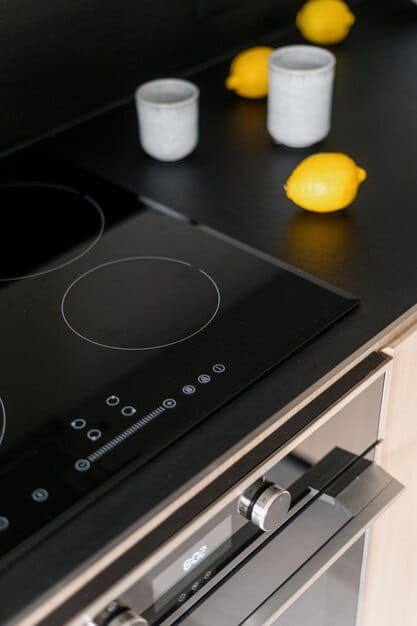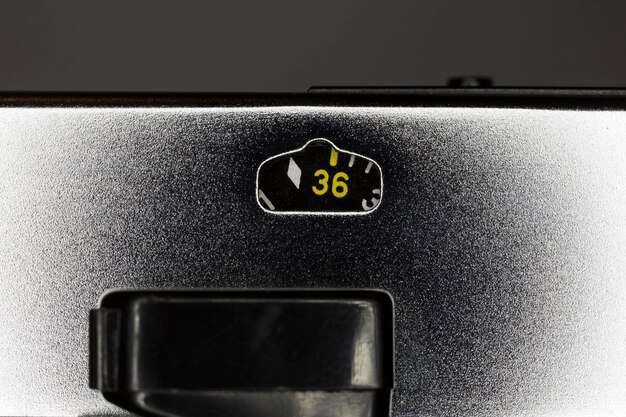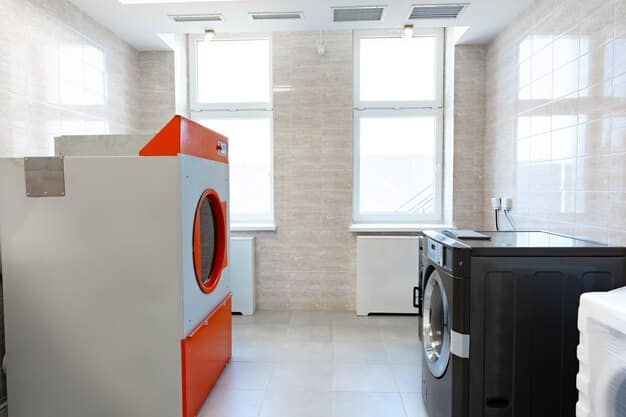Energy-Efficient Appliances: Save Money & Reduce Carbon Footprint

Modern energy-efficient appliances offer a dual benefit, allowing households to significantly reduce their monthly utility bills while simultaneously contributing to a substantial decrease in their environmental impact and carbon emissions.
In an era where both financial prudence and environmental consciousness are paramount, the choice of home appliances carries a weight far beyond mere convenience. Investing in energy-efficient appliances: save money and reduce your carbon footprint, creating a sustainable lifestyle without compromising modern comfort. This guide explores how these smart choices benefit both your wallet and the planet.
The smart home revolution: benefits of energy-efficient appliances
The landscape of home appliances has undergone a significant transformation. What was once solely about functionality now heavily emphasizes efficiency, driven by technological advancements and a growing awareness of energy consumption. Choosing energy-efficient models is more than just a trend; it’s a strategic decision that offers tangible advantages, from reduced operational costs to a lighter environmental impact.
financial savings: a tangible return on investment
One of the most immediate and compelling reasons to switch to energy-efficient appliances is the substantial financial savings they offer. While the initial purchase price might sometimes be slightly higher, the long-term operational costs are significantly lower. This translates into measurable monthly savings on utility bills, as these appliances consume less electricity, natural gas, or water to perform the same tasks as their less efficient counterparts.
- Reduced electricity bills: Appliances like refrigerators, washing machines, and dishwashers are daily power consumers. Energy-efficient models are designed to use less electricity, leading to lower monthly utility expenses.
- Lower water costs: High-efficiency washing machines and dishwashers use significantly less water per cycle, cutting down on water bills, especially in areas with metered water usage or where water conservation is critical.
- Long-term payback: The initial investment is usually recouped within a few years through these savings, making it a sound financial decision over the lifespan of the appliance.
environmental impact: shrinking your carbon footprint
Beyond the financial incentives, the environmental benefits of energy-efficient appliances are profound. By consuming less energy, these appliances reduce the demand for electricity generated from fossil fuels, thereby lowering greenhouse gas emissions. This direct correlation makes them a powerful tool in combating climate change and reducing your household’s overall carbon footprint.
The manufacturing processes for some appliances are also becoming more sustainable, utilizing recycled materials and adhering to stricter environmental standards. This holistic approach ensures that from production to operation, these appliances contribute less to environmental degradation. It’s a proactive step towards a more sustainable lifestyle, demonstrating how individual choices can collectively make a significant difference on a global scale.
In essence, embracing energy-efficient appliances represents a convergence of economic benefit and environmental responsibility. It’s a move towards smarter consumption that aligns with both personal financial goals and broader sustainability objectives, ensuring a healthier planet for future generations.
Decoding energy labels: understanding energy star and beyond
Navigating the world of energy-efficient appliances can feel complex, primarily due to the various labels and ratings designed to inform consumer choices. Understanding these labels is crucial for making truly informed decisions that align with your goals of saving money and reducing environmental impact. The Energy Star certification holds a prominent position in this landscape, but it’s not the only indicator of efficiency.
energy star: a beacon of efficiency
The Energy Star program, a joint initiative of the U.S. Environmental Protection Agency (EPA) and the U.S. Department of Energy (DOE), is perhaps the most recognizable label for energy efficiency in the United States. Products earning the Energy Star label meet strict energy efficiency guidelines set by these agencies. This means they generally use 10-50% less energy and water than standard models, depending on the product type.
- Refrigerators: Energy Star certified refrigerators use less energy than conventional models, thanks to improved insulation and more efficient compressors.
- Washing Machines: These machines use significantly less water and energy per load, often featuring advanced wash cycles and sensors.
- Dishwashers: Energy Star dishwashers employ innovative wash systems and heating elements that reduce water and energy consumption while maintaining cleaning performance.
When you see the Energy Star logo, it acts as a quick and reliable indicator that a product is among the most energy-efficient in its class. It simplifies the decision-making process for consumers looking to reduce their utility bills and environmental footprint without extensive research.
beyond energy star: the energyguide label and other considerations
While Energy Star indicates top-tier efficiency, the EnergyGuide label, found on most new appliances, provides more detailed information. This yellow label estimates the appliance’s annual energy consumption and operating cost, allowing for direct comparisons between models. It also shows a range of similar models and their energy use, placing the specific appliance’s rating in context. This is particularly useful for budget planning and understanding the long-term cost implications.

Other factors also play a role in true energy efficiency. Look for features like “smart” technology that allows appliances to connect to a smart home system for optimized energy use, or specific settings like “eco mode” that further reduce consumption. The appliance’s size and features should also match your household’s needs; an oversized appliance, even if energy-efficient, might consume more energy than a smaller, less efficient one that perfectly suits a smaller household.
By understanding both the prominent Energy Star label and the detailed EnergyGuide, consumers are empowered to make choices that truly reflect their commitment to energy conservation and financial savings.
Key appliances to prioritize for energy efficiency upgrades
When considering an energy efficiency upgrade for your home, not all appliances offer the same return on investment or environmental impact. Focusing on the “heavy hitters” – those that consume the most energy or are used most frequently – can yield the most significant savings and reductions in your carbon footprint. Prioritizing these appliances ensures your efforts are concentrated where they’ll have the greatest effect.
refrigerators and freezers: the constant consumers
Refrigerators and freezers run 24/7, making them one of the highest energy consumers in most homes. An older model, especially ten years or older, can be a major energy hog. Modern Energy Star certified refrigerators often incorporate advanced insulation, more efficient compressors, and smarter temperature controls, leading to significant energy savings. Upgrading to a new, efficient model can cut your refrigeration energy use by a substantial margin, directly impacting your monthly electricity bill.
When shopping, consider features like dual evaporators, precise temperature management, and external ice/water dispensers that reduce the need to open the main door. Even small habits like keeping your refrigerator full (but not overpacked) can help it run more efficiently, as dense items retain cold better.
washing machines and dryers: tackling laundry with less energy
Laundry appliances are also significant energy and water users. Conventional washing machines can consume large amounts of water per load, and traditional dryers are energy-intensive. High-efficiency (HE) washing machines use considerably less water and energy, often featuring advanced sensing technologies to determine optimal water levels and cycle times. Front-loading HE washers are generally more efficient than top-loaders, as they use less water and extract more water from clothes, reducing drying time.

For dryers, consider heat pump dryers, which recirculate hot air, significantly reducing energy consumption compared to conventional models. Line drying, whenever feasible, remains the most energy-efficient option, completely eliminating dryer energy use. If using a dryer, ensure the lint trap is clean and dry full loads to maximize efficiency.
dishwashers: smart cleaning for big savings
Modern dishwashers have come a long way in terms of efficiency. Older models often relied on high water temperatures and prolonged cycles. New Energy Star dishwashers use advanced sensor technology to determine soil levels and adjust water use and cycle length accordingly. They also feature more efficient motors and innovative spray arms that clean dishes effectively with less water and without excessive pre-rinsing.
To maximize efficiency, always load the dishwasher fully, scrape plates instead of rinsing them, and use the air-dry setting instead of heated dry, which consumes a considerable amount of energy. Combining these smart usage habits with an efficient appliance can lead to significant savings on both water and electricity bills over time.
By prioritizing upgrades for these energy-intensive appliances, households can make substantial strides towards a more sustainable and cost-effective home environment.
Smart technology and behavior: enhancing appliance efficiency
While choosing energy-efficient appliances is a crucial first step, maximizing their savings potential often involves integrating them with smart home technology and adopting conscious usage behaviors. The synergy between intelligent devices and mindful habits can significantly amplify the benefits, leading to even greater financial savings and a further reduction in your carbon footprint.
the rise of smart appliances and connectivity
Many modern energy-efficient appliances come equipped with “smart” features, allowing them to connect to your home Wi-Fi network and be controlled remotely via smartphone apps. This connectivity opens up a realm of possibilities for optimized energy use:
- Remote control and scheduling: You can turn appliances on or off from anywhere, or schedule them to run during off-peak electricity hours when rates are lower. For instance, running your dishwasher or washing machine late at night can save money in tiered energy markets.
- Energy monitoring: Some smart appliances provide real-time energy consumption data, empowering you to track usage and identify areas for further improvement. This data visibility fosters a greater understanding of your energy habits.
- Integration with smart home ecosystems: When integrated into a broader smart home system, appliances can work in concert to optimize overall home energy use. For example, a smart thermostat could signal to your smart water heater to heat water only when needed.
These advanced features move beyond basic efficiency, offering dynamic control and insights that adapt to your lifestyle and energy pricing, making your energy savings truly smart.
conscious usage behaviors: the human element of efficiency
Even the most efficient appliance can consume excess energy if not used wisely. Adopting simple behavioral changes can significantly enhance their performance and extend their lifespan while ensuring maximum savings:
- Proper maintenance: Regularly clean refrigerator coils, replace furnace filters, and clean lint traps in dryers. Well-maintained appliances operate more efficiently and last longer.
- Optimal loading: Always load washing machines and dishwashers to their full capacity. Running partial loads wastes water and energy. Conversely, avoid overpacking, as it can hinder performance.
- Temperature settings: Set your refrigerator and freezer to optimal, not excessively cold, temperatures (e.g., 37-40°F for refrigerators and 0°F for freezers). Adjust your thermostat when away from home.
- Unplugging “vampire” devices: Many electronics consume “phantom” or “vampire” power even when turned off but still plugged in. Use power strips with on/off switches to easily cut power to multiple devices.
By combining the capabilities of smart technologies with mindful habits, households can create a truly energy-efficient ecosystem. This dual approach ensures that both the appliances and their users are working in harmony towards a common goal of reduced energy consumption and environmental impact.
Calculating your savings: a practical approach
Understanding the financial benefits of energy-efficient appliances goes beyond just seeing a lower utility bill. By performing a simple calculation, you can project your potential savings and better appreciate the return on your investment. This practical approach helps solidify the economic argument for making the switch.
before and after: mapping your energy consumption
The first step in calculating savings is to understand your current energy usage. Review your past utility bills to identify the average monthly or annual consumption (measured in kilowatt-hours, or kWh). Many utility companies also provide online tools that break down your energy use by appliance type, which can be incredibly helpful for identifying major consumption areas.
Once you’ve identified high-consumption appliances, research the estimated energy usage of their energy-efficient equivalents. The EnergyGuide label is invaluable here, providing annual kWh estimates and projected operating costs. Compare the old appliance’s estimated usage with the new, efficient model’s data. For instance, an old refrigerator might consume 1500 kWh annually, while a new Energy Star model might only use 400 kWh.
Another crucial element in this calculation is your cost per kilowatt-hour, which can be found on your utility bill. This rate varies by region and sometimes by time of day (for those on time-of-use plans). Knowing this precise figure allows you to convert energy savings directly into dollar savings, providing a clear financial incentive.
projecting payback and long-term benefits
With the energy consumption data and your utility rate, you can now project your annual savings. For example, if the old refrigerator consumes 1100 kWh more per year than the new one, and your electricity rate is $0.15/kWh, then your annual savings on that single appliance would be 1100 kWh * $0.15/kWh = $165. Multiply this by the average lifespan of the appliance (e.g., 10-15 years for a refrigerator), and the total savings can be substantial, easily covering the initial investment and then some.
It’s also worth investigating local and federal incentives. Many governments and utility companies offer rebates, tax credits, or special financing for purchasing Energy Star appliances. These incentives can further reduce the initial cost, effectively lowering your payback period and increasing your overall return on investment. Some programs even offer free energy audits, which can help pinpoint areas of inefficiency in your home and provide tailored recommendations for upgrades.
By taking a methodical approach to calculating your potential savings, you can transform the abstract concept of “energy efficiency” into a concrete financial advantage, making the decision to upgrade not just environmentally responsible but also economically sound.
Government programs and initiatives supporting efficiency
Governments and various organizations worldwide actively promote energy efficiency through a range of programs and incentives. These initiatives are designed to encourage consumers and businesses to adopt more sustainable practices, thereby reducing national energy consumption, lowering carbon emissions, and fostering economic growth in green sectors. Understanding these programs can unlock additional financial benefits when investing in energy-efficient appliances.
federal and state incentives in the united states
In the United States, several federal and state-level programs aim to make energy-efficient upgrades more accessible and affordable. The Department of Energy (DOE) and the Environmental Protection Agency (EPA), through programs like Energy Star, provide essential guidance and standards. Beyond certification, there are often direct financial incentives:
- Tax Credits: The federal government occasionally offers tax credits for certain energy-efficient home improvements, including specific types of appliances like heat pump water heaters or biomass stoves. These credits directly reduce the amount of income tax you owe.
- Rebates: Many state and local governments, as well as individual utility companies, offer rebates for purchasing Energy Star certified appliances. These rebates can range from a small percentage of the purchase price to significant flat-rate amounts. It’s crucial to check your utility provider’s website or local government energy office for current offerings.
- Low-interest loans: Some states or municipalities provide special financing options, such as low-interest loans, for homeowners looking to make energy-efficient upgrades. These programs help spread the cost of larger investments over time.
These incentives vary widely by location and change periodically, so it’s essential to research what’s available in your specific area before making a purchase. Websites like Energy.gov are excellent resources for finding federal and state programs.
broader sustainability goals and public awareness campaigns
Beyond direct financial incentives, governments also engage in broader public awareness campaigns aimed at educating consumers about the benefits of energy efficiency. These initiatives often highlight the environmental impact of energy choices and provide practical tips for reducing household energy consumption. They underscore the collective responsibility in addressing climate change and promote a culture of sustainability.
For instance, public service announcements may focus on simple actions like unplugging electronics, sealing air leaks in homes, or adjusting thermostat settings. While these may seem minor, their widespread adoption can lead to substantial aggregate energy savings and emission reductions. The goal is to make energy efficiency a default consideration in consumer decision-making, rather than an afterthought.
By leveraging these government programs and staying informed about ongoing initiatives, consumers can not only save money but also actively participate in a larger movement towards a more sustainable and energy-independent future.
Beyond purchase: maintaining long-term efficiency
The journey towards an energy-efficient home doesn’t end with the purchase and installation of new appliances. To truly maximize savings and minimize environmental impact over the long term, proper maintenance and smart usage habits are equally critical. Neglecting these aspects can diminish the efficiency benefits and shorten the lifespan of your valuable investments, undermining the very purpose of your upgrade.
the role of regular maintenance
Just like a well-tuned car, energy-efficient appliances perform best when regularly maintained. Simple, routine checks and cleanings can prevent a decline in performance and ensure they continue to operate at peak efficiency:
- Refrigerator coils: Dust and debris can accumulate on condenser coils, making the refrigerator work harder and consume more energy. Cleaning them every 6-12 months can improve efficiency by up to 10%.
- Dryer lint trap and vent: A clogged lint trap not only reduces drying efficiency but also poses a fire hazard. Cleaning it after every load is crucial. Annually, clean the dryer vent to ensure optimal airflow and prevent lint buildup in the ductwork.
- Dishwasher filters: Food particles can clog dishwasher filters, leading to less effective cleaning and increased energy use. Most modern dishwashers have easily accessible filters that should be cleaned regularly.
- Washing machine care: Periodically run a cleaning cycle with a washing machine cleaner to prevent mold and mildew buildup, which can affect efficiency and fabric care.
These small maintenance tasks are often quick and straightforward but yield significant benefits in terms of appliance longevity and consistent energy performance. Many manufacturers provide detailed maintenance instructions in their user manuals, which should be consulted for specific recommendations.
optimizing usage for sustained efficiency
Beyond physical maintenance, how you use your appliances also plays a crucial role in their long-term efficiency. Even the most technologically advanced appliance can be inefficient if misused:
- Strategic thermostat use: For heating and cooling, use programmable or smart thermostats to adjust temperatures when you’re away or asleep. A simple adjustment of a few degrees can lead to noticeable energy savings.
- Unplugging electronics: “Phantom load” or “vampire drain” refers to the electricity consumed by electronics when they are turned off but still plugged in. Unplugging chargers, TVs, and computers when not in use, or using power strips that can be completely shut off, can eliminate this wasted energy.
- Optimal appliance loading: As mentioned, filling washing machines and dishwashers to capacity maximizes efficiency. Running multiple small loads unnecessarily increases energy and water consumption.
- Natural alternatives: Whenever possible, consider natural alternatives. Air-drying clothes on a line instead of using a dryer, or opening windows for ventilation instead of relying solely on air conditioning, can significantly reduce energy demand.
By embedding these maintenance routines and usage habits into your daily life, you ensure that your energy-efficient appliances continue to deliver maximum financial and environmental benefits throughout their lifespan. It transforms a one-time purchase into a sustained commitment to sustainability.
Future trends: innovation in appliance efficiency
The drive towards greater energy efficiency in home appliances is not slowing down; in fact, innovation is accelerating. As technology advances and environmental concerns grow, the next generation of appliances promises even greater savings and reduced environmental impact. Staying abreast of these future trends can help homeowners plan for future upgrades and continue their journey towards a more sustainable lifestyle.
advanced materials and manufacturing techniques
Future appliances will likely feature even more advanced materials that offer superior insulation, reduced weight, and enhanced durability. For example, vacuum insulation panels (VIPs) are already being integrated into some refrigerators, offering significantly better thermal performance than traditional insulation. Expect to see more sustainable and recyclable materials used in appliance construction, further reducing their lifecycle environmental footprint.
Manufacturing processes themselves are becoming more energy-efficient, with companies investing in renewable energy sources for their factories and implementing lean manufacturing techniques to reduce waste. This holistic approach means that the energy story of an appliance begins long before it reaches your home, covering its entire production and distribution chain.
connectivity, ai, and predictive maintenance
The integration of artificial intelligence (AI) and machine learning (ML) will elevate smart appliances to new levels of efficiency. Imagine a refrigerator that learns your habits and optimizes cooling cycles based on when you typically open the door, or a washing machine that automatically chooses the most efficient cycle based on load size and fabric type, informed by real-time utility rates.
Predictive maintenance, enabled by AI, will also minimize energy waste from failing components. Appliances could self-diagnose issues and alert users or service technicians before a minor problem turns into a major energy drain or breakdown. This proactive approach ensures appliances operate at peak performance throughout their lifespan, avoiding efficiency losses due to wear and tear.
Further developments in grid interaction will allow appliances to communicate directly with the energy grid, automatically adjusting their consumption during peak demand times to save money and stabilize the power supply. This “demand response” capability will be a cornerstone of future energy systems, with individual households playing an active role in grid management.
The future of energy-efficient appliances is one of continuous improvement, driven by a blend of pioneering technology, smarter integration, and a deeper understanding of sustainable living. These innovations promise not only to further reduce utility bills and carbon footprints but also to enhance convenience and contribute to a more resilient and sustainable energy infrastructure.
| Key Point | Brief Description |
|---|---|
| 💰 Financial Savings | Lowers utility bills through reduced electricity, gas, and water consumption over the appliance’s lifespan. |
| 🌍 Carbon Footprint Reduction | Decreases demand for fossil fuel-generated electricity, leading to fewer greenhouse gas emissions. |
| 🌟 Energy Star & Efficiency Ratings | Certified appliances meet strict energy performance guidelines, ensuring high efficiency and proven savings. |
| 💡 Smart Tech & Habits | Connectivity, AI, and conscious usage (maintenance, optimal loading) amplify energy savings. |
Frequently asked questions about energy-efficient appliances
Energy-efficient, for an appliance, means it’s designed to use less energy (electricity, gas, or water) to perform its function compared to standard models. This is achieved through advanced technology, better insulation, and optimized operational cycles, leading to lower utility bills and reduced environmental impact. Programs like Energy Star certify these products to meet specific efficiency benchmarks.
Initially, some energy-efficient appliances might have a slightly higher purchase price. However, this upfront cost is often offset by significant long-term savings on utility bills. The payback period varies by appliance type and usage, but consumers typically recoup the difference within a few years, making them a worthwhile investment over their lifespan due to ongoing energy cost reductions.
By consuming less energy, energy-efficient appliances reduce the demand for electricity, much of which is generated from fossil fuels. Lower electricity demand means less coal, oil, or natural gas needs to be burned, directly leading to a decrease in greenhouse gas emissions and a smaller carbon footprint associated with your household’s energy consumption.
The most impactful upgrades typically include appliances that run continuously or are used frequently and consume significant energy. Prioritize refrigerators, freezers, washing machines, dryers, and dishwashers. These appliances, when upgraded to energy-efficient models, offer the greatest potential for long-term savings and substantial reductions in your home’s energy consumption.
Yes, many governments and local utility companies offer various incentives. These can include federal tax credits, state and utility rebates, and occasionally low-interest loans. Eligibility and availability vary by location and appliance type. It’s advisable to check federal energy resources and your local utility provider’s website for current programs before making a purchase.
Conclusion
The transition to energy-efficient appliances is more than just an advantageous choice; it’s a necessary step towards a financially prudent and environmentally responsible future. Embracing these technologies empowers consumers to take control of their utility expenses while making a tangible contribution to reducing global carbon emissions. The benefits extend beyond the immediate savings, fostering a sustainable lifestyle that pays dividends for both the household budget and the planet as a whole. As innovation continues to redefine efficiency, the path to a greener, more economical home becomes ever clearer, inviting everyone to partake in this essential evolution.





